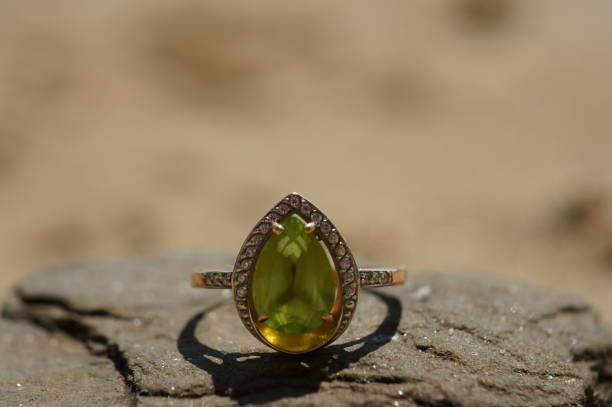Amethyst rings are a popular choice among gemstone jewelry enthusiasts, celebrated for their stunning purple hues and historical significance. However, when considering amethyst rings, it’s essential to understand how they compare to other gemstone rings. Factors such as durability, color, value, and symbolism play significant roles in differentiating amethyst from other gemstones. Here’s a detailed comparison of amethyst rings to help you understand their unique attributes and how they stack up against other popular gemstones.
1. Color and Aesthetics
Amethyst: Amethyst is renowned for its vibrant purple color, which ranges from light lavender to deep violet. Its beauty is enhanced by its versatility, as it pairs well with various metals and designs. The gemstone’s color is its most defining feature, and its rich tones can be both soothing and striking.
Diamonds: Diamonds are known for their unparalleled brilliance and clarity rather than color, although they come in various colors, including yellow, pink, and blue. The classic clear diamond remains a symbol of timeless elegance and is often chosen for engagement rings and fine jewelry due to its exceptional sparkle and hardness.
Sapphires: Sapphires are most famous for their deep blue color, though they come in a range of hues, including pink, yellow, and green. The intense blue of sapphire is often seen as both regal and sophisticated. Like diamonds, sapphires are prized for their brilliance but offer a range of colors that can be quite striking.
Emeralds: Emeralds are celebrated for their lush green color, which is often seen as a symbol of rebirth and love. The rich green of an emerald can be incredibly captivating, though emeralds are more prone to inclusions and are generally less durable than diamonds or sapphires.
2. Durability and Hardness
Amethyst: Amethyst has a hardness of 7 on the Mohs scale, which makes it fairly durable but not as resistant to scratching and damage as harder gemstones like diamonds or sapphires. While it is suitable for everyday wear, amethyst rings should be protected from harsh chemicals and physical impacts to avoid potential damage.
Diamonds: With a Mohs hardness of 10, diamonds are the hardest natural material, making them exceptionally durable and ideal for everyday wear. This hardness contributes to their enduring appeal in engagement rings and other fine jewelry.
Sapphires: Sapphires have a hardness of 9 on the Mohs scale, making them very durable and suitable for rings that are worn daily. Their toughness makes them a popular choice for engagement rings and other pieces that require resilience.
Emeralds: Emeralds have a hardness of 7.5 to 8 on the Mohs scale but are more prone to inclusions and fractures, which can affect their durability. Emeralds are often treated to enhance their clarity, but their relative fragility means they may require more careful handling and maintenance.
3. Value and Affordability
Amethyst: Amethyst is relatively affordable compared to other precious gemstones. Its value is influenced by its color, clarity, and size, but it is generally more accessible than diamonds, sapphires, or emeralds. This affordability makes amethyst a popular choice for those seeking a beautiful gemstone ring without the higher cost.
Diamonds: Diamonds are among the most expensive gemstones due to their rarity, hardness, and brilliance. The value of diamonds can vary widely based on the 4 Cs: carat weight, cut, color, and clarity. As a result, diamond rings can be significantly more costly than amethyst rings.
Sapphires: Sapphires can be quite valuable, particularly those with intense, vivid colors and high clarity. The price of sapphires depends on their color, size, and quality, with blue sapphires generally commanding higher prices. While sapphires are less expensive than diamonds, they are still a significant investment.
Emeralds: Emeralds are also valued highly, especially those with deep, vibrant green colors and good clarity. Due to their natural inclusions and the high cost of quality stones, emeralds can be as expensive as or even more expensive than sapphires, depending on their quality and size.
4. Symbolism and Historical Significance
Amethyst: Amethyst has a rich history and is associated with various symbolic meanings, including tranquility, clarity, and spiritual protection. In ancient Greece, amethyst was believed to prevent intoxication, and it has been valued in various cultures for its calming and healing properties.
Diamonds: Diamonds symbolize eternal love and commitment, making them a popular choice for engagement rings. Their status as the hardest natural material and their brilliant sparkle have made them symbols of luxury and enduring value.
Sapphires: Sapphires have long been associated with wisdom, nobility, and divine favor. In many cultures, they are seen as symbols of sincerity and loyalty. Their deep blue color and brilliance have made them a popular choice for royal and ceremonial jewelry.
Emeralds: Emeralds symbolize rebirth, love, and fertility. Their lush green color has been associated with the rejuvenating power of nature. Historically, emeralds have been valued by various civilizations, including the Incas and Cleopatra, who were known for their love of the gemstone.
5. Design Versatility
Amethyst: The versatility of amethyst allows it to be set in a variety of styles, from classic solitaires to intricate vintage designs. Its range of purple shades means it can be paired with different metals and accent stones, making it adaptable to various personal styles.
Diamonds: Diamonds are highly versatile and can be set in virtually any design, from minimalist to elaborate. Their brilliance complements many styles and settings, making them suitable for a wide range of jewelry pieces.
Sapphires: Sapphires also offer versatility in design, with their rich colors enhancing both traditional and modern styles. They pair well with diamonds and other gemstones, allowing for creative and personalized designs.
Emeralds: The deep green of emeralds lends itself to elegant and classic designs, often used in vintage and regal settings. While emeralds can be incorporated into modern designs, they are typically associated with more traditional and luxurious styles.
Conclusion
Amethyst rings offer a unique blend of beauty, affordability, and symbolism, making them a popular choice among gemstone jewelry enthusiasts. While they may not match the hardness of diamonds or the deep blue of sapphires, amethyst provides a vibrant and versatile option for those seeking a striking and meaningful gemstone. When comparing amethyst to other gemstones, it’s essential to consider factors such as durability, value, color, and design versatility to find the perfect ring that suits your style and preferences.



